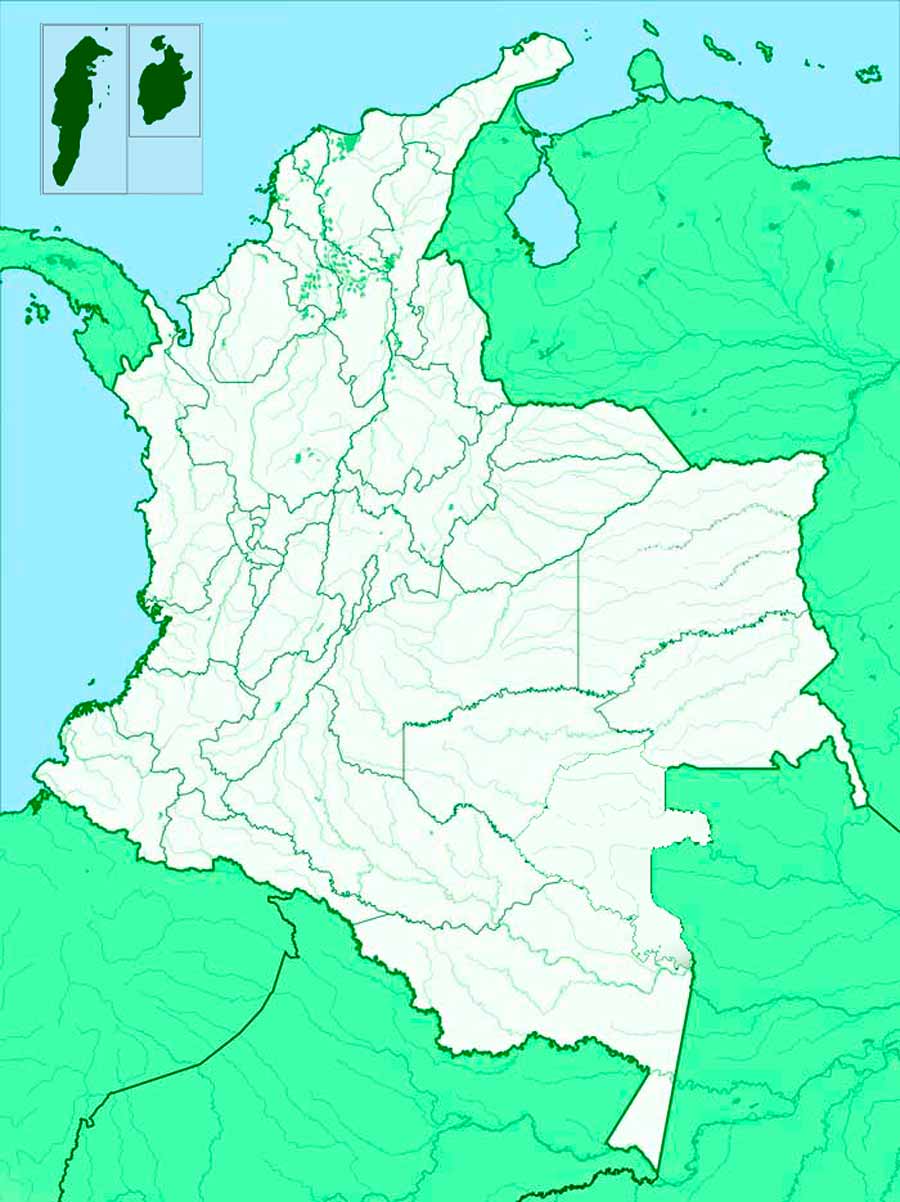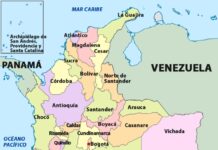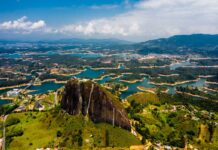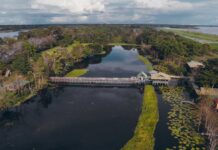El Archipiélago de San Andrés, Providencia y Santa Catalina, es uno de los 32 departamentos que conforman la República de Colombia. Su capital es San Andrés. Es el único departamento insular de Colombia, las lenguas principales habladas en el archipiélago son el criollo sanadresano, el español y el inglés.
| SIMBOLOS DEL DEPARTAMENTO |
Bandera de San Andrés, Providencia y Santa Catalina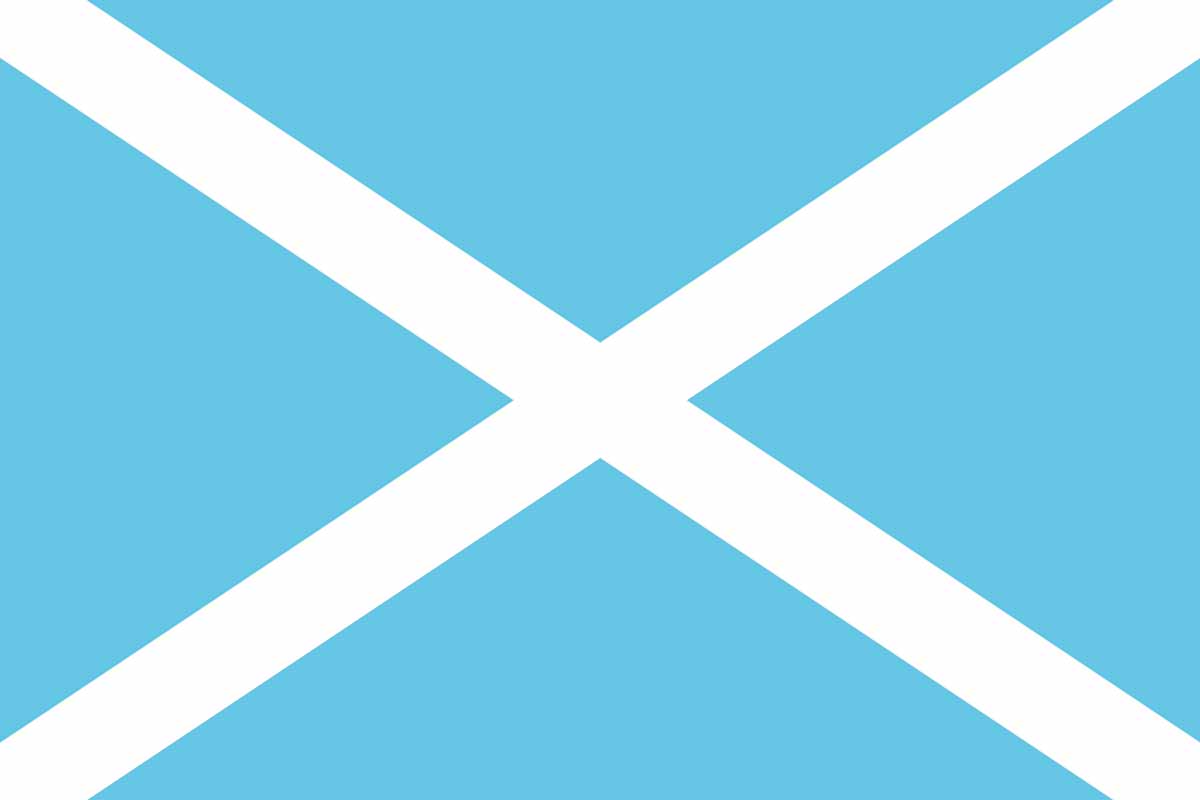 |
Escudo del San Andrés, Providencia y Santa Catalina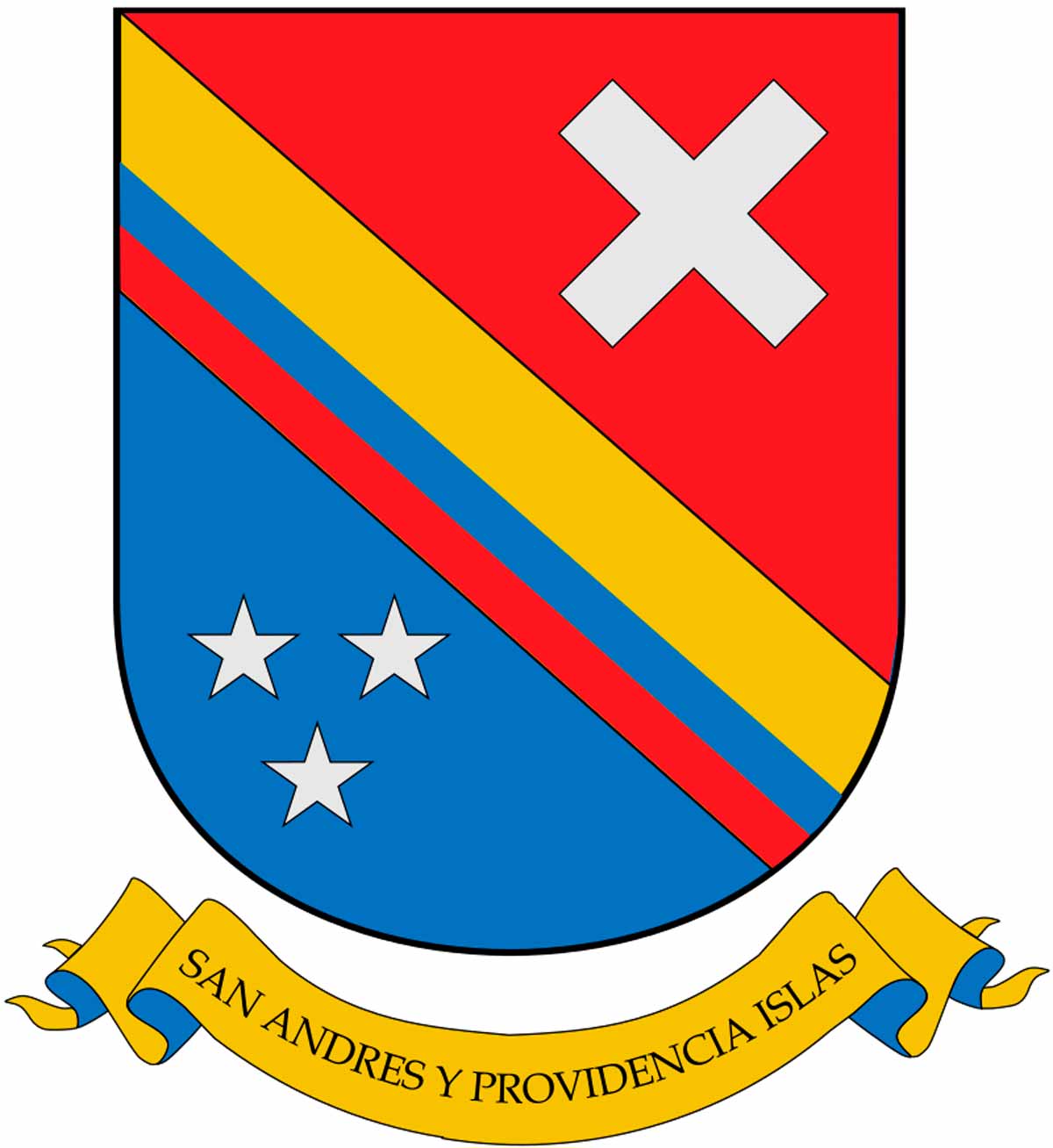 |
| Clic aquí para escuchar el: Himno del Archipiélago de San Andrés, Providencia y Santa Catalina |
| DATOS GENERALES |
| País: Colombia. |
| Entidad: Departamento. |
| Capital: San Andrés |
| Gentilicio: Sanandresano(a) o Isleño(a) |
| Lema: Paraíso Turístico, Tourist Paradise |
| Fundación: 27 de abril de 1847. |
| Erección como departamento: 4 de julio de 1991 |
| Cantidad de Municipios: 1 |
| Sitio web oficial: sanandres.gov.co |
Historia del Archipiélago de San Andrés, Providencia y Santa Catalina:
Las islas, debido a su lejanía y dificultades de navegación carecieron de poblaciones indígenas permanentes durante la época precolombina. En 1510, España tomó posesión oficial de las islas, administrándolas inicialmente desde la Real Audiencia de Panamá y luego, a partir de 1544, bajo la Capitanía General de Guatemala. Entre 1629 y 1630, colonos neerlandeses e ingleses establecieron los primeros asentamientos, principalmente en Santa Catalina y Providencia, nombrándolas Henrietta y Providence.
Durante las décadas de 1670 y 1680, Los Piratas Morgan y Eduard Mansvelt utilizaron San Andrés como base de operaciones cuando las islas formaban parte de las colonias inglesas. En 1775, Tomás O’Neille, bajo la autoridad del capitán general de Guatemala, expulsó a ingleses y holandeses. En 1786, se firmaron tratados que exigían la salida de los súbditos ingleses de la Costa de Mosquitos, y el archipiélago pasó a la jurisdicción del Virreinato de La Nueva Granada en 1803.
Durante la Guerra de la Independencia, las islas mantuvieron relaciones comerciales con la Corona española hasta que el corsario francés Luis Aury las tomó en 1818. En 1822, las islas se unieron a la Gran Colombia. Posteriormente, el archipiélago fue declarado puerto franco, y se abolió la esclavitud, desencadenando un movimiento alfabetizador liderado por Philip Beekman Livingston.
En 1866, el archipiélago pasó del Estado Soberano de Bolívar al Gobierno central, creándose el Territorio de San Andrés y Providencia en 1868. En 1900, Francia reconoció la soberanía colombiana sobre el archipiélago. En 1912, se estableció la Intendencia de San Andrés y Providencia, separándola del Departamento de Bolívar.
En 1928, Colombia y Nicaragua firmaron el Tratado Esguerra-Bárcenas, reconociendo la soberanía de Colombia sobre el archipiélago. En 1953, el general Gustavo Rojas Pinilla declaró a San Andrés Puerto libre, y en 1972, Estados Unidos renunció a sus pretensiones sobre algunos cayos. En 1991, la Constitución colombiana creó el Departamento Archipiélago de San Andrés, Providencia y Santa Catalina, y en 2001, la UNESCO declaro el departamento Reserva de Biosfera Sea Flower.
División político-administrativa del Archipiélago de San Andrés, Providencia y Santa Catalina
El Archipiélago de San Andrés, Providencia y Santa Catalina esta conformado por 1 área no municipalizada que es la Isla de San Andrés, la cual a su ves es la capital del departamento, y un municipio.
| Municipios y áreas no municipalizadas | Categoría |
|---|---|
| Isla de San Andrés | Área no municipalizada (Capital) |
| Providencia y Santa Catalina Islas | Municipio |
Gastronomía del Archipiélago de San Andrés, Providencia y Santa Catalina
La gastronomía del Archipiélago de San Andrés, Providencia y Santa Catalina se totalmente influenciada por los frutos del mar, al ser un área insular es lógico que esto suceda, sin embargo también hay una gran variedad de productos de la tierra que se integran a su deliciosa gastronomía como lo es la yuca, el fruto del árbol de pan, el coco, entre otros. Algunos de los platos más populares de la gastronomía isleña son:
- Rondón (Rundown)
- Muelas de cangrejo al ajillo
- Crab Backs o cangrejos rellenos
- Sopa de cangrejo o Crab soup
- Johnny Cakes o Journey cake
- Pig tail
- Corned fish
Ferias y Fiestas del Archipiélago de San Andrés, Providencia y Santa Catalina
Las festividades en el archipiélago reflejan la búsqueda por preservar las tradiciones de las islas. Durante el año se suelen llevar a cabo varios evento de gran envergadura entre los que se cuentan: El Festival Internacional de Teatro “Ethnic Roots”, el Festival de la luna verde “The green moon festival”, el Festival de Cine Seaflower, El Reinado Internacional del Coco y Fiestas patronales de San Andrés, entre otros.
(Conoce aquí la lista completa de festivales, ferias, fiestas y eventos del San Andrés, Providencia y Santa Catalina)
Sitios Turísticos del Archipiélago de San Andrés, Providencia y Santa Catalina
El turismo es de las principales fuentes económicas del archipiélago y sin dudas las playas y el inmenso mar de siete colores son el principal atractivo turístico de la isla, entre los principales sitios para visitar en las islas encontramos:
- Playa Cocoplum
- Johnny Cay o Cayo Sucre
- Cueva de Morgan
- El Hoyo Soplador
- El Jardín Botánico de San Andrés
- El Acuario de San Andrés
(Conoce aquí la lista completa de lugares turísticos del Archipiélago de San Andrés, Providencia y Santa Catalina)
Economía del Archipiélago de San Andrés, Providencia y Santa Catalina
La economía del Archipiélago se centra principalmente en el turismo, y en el comercio, gracias a su ubicación geográfica y a sus espectaculares playas y mar las islas se han convertido en uno de los destinos turísticos predilectos de sur America, otras actividades económicas que se desarrollan en menor medida son la agricultura y la pesca.
Leyendas y Mitos del Archipiélago de San Andrés, Providencia y Santa Catalina
La riqueza cultural del archipiélago, se manifiesta no solo en sus exquisitas propuestas gastronómicas, vibrantes festividades, cautivadoras danzas y arraigadas costumbres, sino también encuentra su reflejo en las cautivadoras leyendas y mitos que han trascendido a lo largo de generaciones. Entre las narrativas míticas que enriquecen el imaginario colectivo de los habitantes de las islas, destacan:
- Leyenda de Rolling Calf
- leyenda de Duppy
- Leyenda de el Tesoro del Pirata Morgan
- Leyenda de Buoca o Boca
- Leyenda del Árbol de Pan
- Leyenda de Boo boo (buba), entre otros.
Estas leyendas y mitos conforman una parte vital de la herencia cultural de la región, transmitiendo costumbres, creencias y enseñanzas a lo largo de generaciones entre los isleños.


